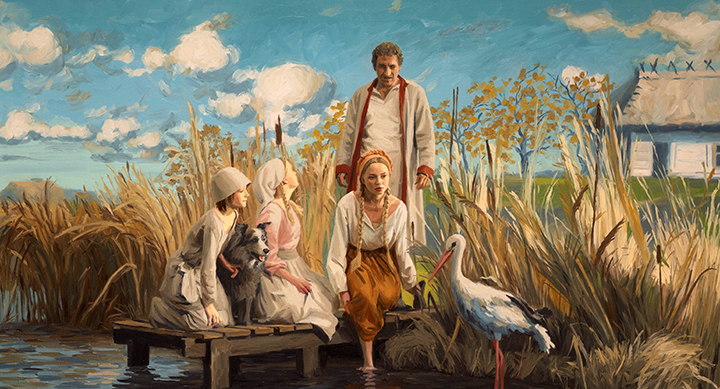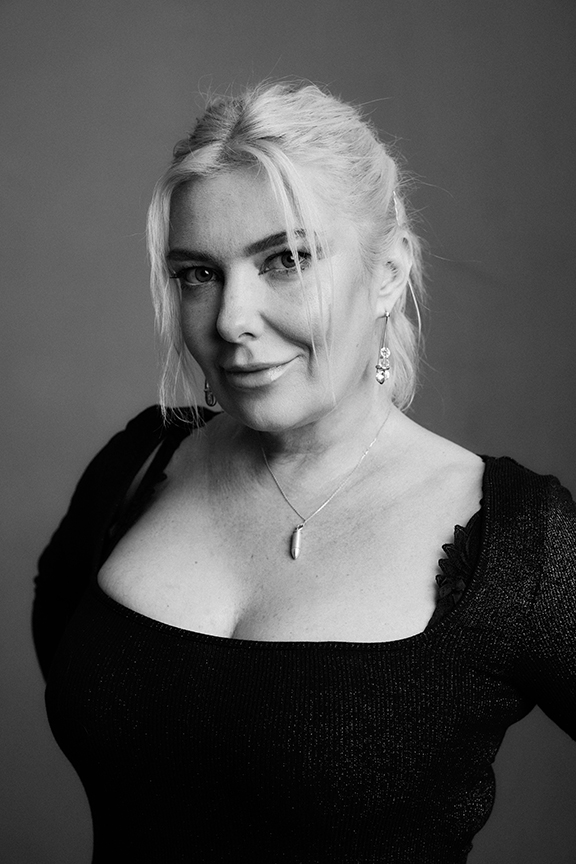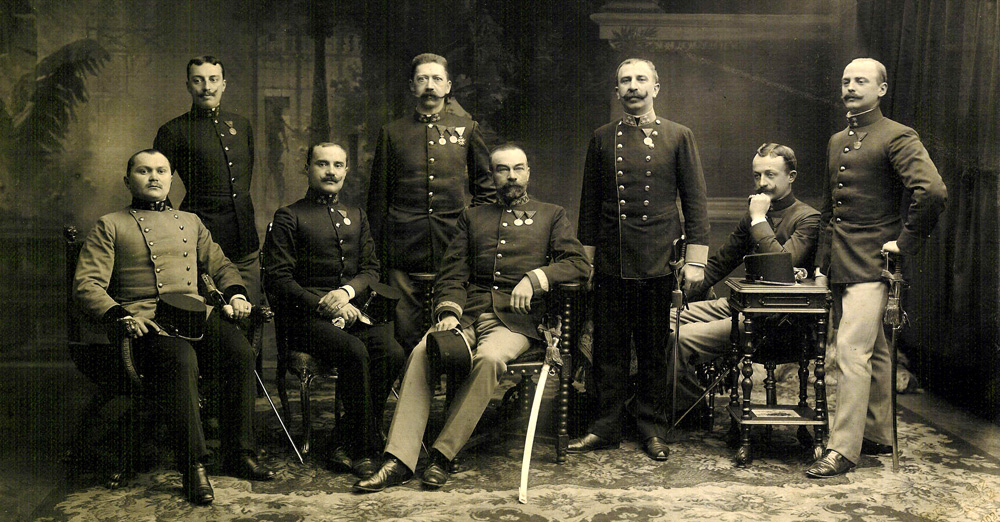An Interview with Dorota Kobiela Welchman – Co-director and Creator of the Visual Concept of the Film, on the Adaptation of the Nobel-Winning Novel.
*

*
Joanna Sokołowska-Gwizdka:
What motivated you to bring Władysław Reymont’s novel to the screen?
Dorota Kobiela Welchman:
First and foremost, a deep admiration for the literature. Reymont’s The Peasants is an outstanding work of prose that won the Nobel Prize, surpassing works such as Thomas Mann’s Buddenbrooks. Reymont himself did not believe he stood a chance for such a prestigious award.
The novel is set in the late 19th century in the small village of Lipce, which symbolizes a typical Polish countryside. The social portrait depicted in The Peasants appeared exotic to the Nobel committee, while also vividly reflecting the human experience, with its passions, love, anger, and jealousy. You have managed to bring out and highlight all these values, making the scene from over a hundred years ago contemporary and universal.
It was this universality of the literary image that captivated us. There are so many modern themes one can find in this novel. It was very important to me to address issues in the film that are relevant in today’s world. This wasn’t just an adaptation treated like a homework assignment.

Joanna Sokołowska-Gwizdka:
For us, The Peasants was a school reading; everyone who finished school in Poland knows it. But how did your husband, an Englishman who wasn’t raised on Polish literature, perceive the novel?
Dorota Kobiela Welchman:
My husband, Hugh, read the book from a different perspective. I was curious how he would receive it. But he said it was one of the best universal novels about humanity and emotions he had ever read, and it describes a social group that is rarely featured in books and often underappreciated—peasants.
Typically, peasants are depicted in a stereotypical way: the poor farmer exploited by the cruel landowner, without character or personality. In the book, we see the individuality of each member of this community and the motivations behind their actions.
In the film, we wanted to preserve this literary value; here, the peasant is also vivid, colorful, and interesting. The excellent supporting cast helps shape a distinct collective protagonist, which adds depth and authenticity to the entire portrayal.
In the adaptation, the central character is Jagna; the events unfold around her, and she is the one who evokes emotions and arouses passions. In the book, this character is left open-ended and ambiguous.
The ambiguous way Reymont presented Jagna gave us immense opportunities in creating the script. We looked for ways to best portray her sensitivity. We decided that her artistic talents—her paper cutouts—would be an excellent symbol of her inner experiences.
Women in such communities did not know what individuality was; they conformed to the norms and customs widely accepted. Being different was not acceptable.
The theme of otherness and Jagna’s situation as a young woman, contrasted with the dominant voice of the majority, is, in my opinion, very relevant today. Jagna primarily wanted to live her life her own way. From the beginning, when she refused to cut her braids during the wedding ceremony, she was rebellious. Her defiance of the general rules aroused growing fear in the community, and fear breeds aggression.
Joanna Sokołowska-Gwizdka:
Why did you decide on painterly animation, similar to Loving Vincent?
Dorota Kobiela Welchman:
When I was listening to the audiobook of The Peasants while driving, I discovered that Reymont’s language is very rich but also incredibly visual. So the decision to use a painterly technique seemed natural.

Joanna Sokołowska-Gwizdka:
You once mentioned in an interview that a painting is static for you, and that’s where the idea for painted films came from. Do you still think that way?
Dorota Kobiela Welchman:
I believe so. While working on Loving Vincent, I was always tempted to go „behind the scenes” of the paintings featured in the film. My painting professor used to say to look at still lifes as if they were actors, and that approach has stayed with me.
The scale was immense, with a dynamic camera and numerous group scenes. Unlike Vincent, here the story was already established, and we sought the visual layer to match it.
Joanna Sokołowska-Gwizdka:
The Peasants is a grand spectacle full of painterly details. What challenges did this production present?
Was every element of the film created first and then painted? Wouldn’t it be easier to simply paint a complex piece of costume or decoration?
Dorota Kobiela Welchman:
Sometimes on set, we joked that if someone lost, for example, an earring, the painter would just paint it in. But everything had to be prepared in advance. For instance, the wedding crown for Jagna was designed by artist and graphic designer Professor Katarzyna Stanny. The work took days and nights. First, an embroidered headdress was created, and then the second, final part was made, consisting of a golden mesh onto which various decorative elements were applied. It became a true work of art.
Joanna Sokołowska-Gwizdka:
The film heavily relies on the aesthetics of the Young Poland movement; the referenced works of Józef Chełmoński and Ferdynand Ruszczyc perfectly complement the narrative of the novel. However, the music doesn’t originate from Reymont’s time, yet it feels as though it not only belongs to the era but also carries the spirit of a broader Slavic identity.
Dorota Kobiela Welchman:
The music was composed by Łukasz Rostkowski, who previously was a rapper under the stage name L.U.C. He approached us with the idea of writing music for the film, and although he had never done it before, we decided to take a chance. As we started working together, it quickly became clear that his talent harmonized perfectly with our vision.

Joanna Sokołowska-Gwizdka:
In November, we will be showing The Peasants at the Austin Polish Film Festival in Texas. What do you think an American viewer will notice?
Dorota Kobiela Welchman:
I think viewers worldwide will notice the universal story that resonates with contemporary issues, such as double standards or patriarchy. These are themes that can be understood in any part of the world. The issues shown in the film are not exclusive to the Slavic world but are also indicative of our times and the modern human experience.
Joanna Sokołowska-Gwizdka:
What does this film mean to you personally?
Dorota Kobiela Welchman:
That’s a very emotional question. For me, it is an intimate story about my experiences, feelings, and my relationship with the character of Jagna. Besides that, this film is the result of four years of work by a large artistic team, their dedication, and the energy they gave us.
The film inspires thought and encourages the reevaluation of stereotypes. It is also a beautiful piece with high aesthetic values. You have created a great work that, regardless of time, opinions, or judgments, is timeless and will go down in history.
*

*
We invite you to the film screening during the Gala of the 19th Austin Polish Film Festival, on November 8, at 6:30 pm. More information on the website:
https://www.austinpolishfilm.com/
*





